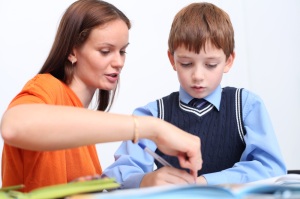 Mathematics is the key skill which your children need to acquire for use in their daily life. As a parent, you should thing of math as a continuum that begin very early in life and continuous through The learning lab school. Early experience with number and operations is fundamental for acquiring more complex mathematical skills and concepts. According to developmental progression, the practice guide describes how to teach the main aspects of early number knowledge from basic skills to operations. It also provide teachers with a road map for delivering developmentally appropriate instructions to young children of varying skills level. Teachers can first focus on working with small collection of objects and then more progressively larger collection of objects with each step in developmental progression.
Mathematics is the key skill which your children need to acquire for use in their daily life. As a parent, you should thing of math as a continuum that begin very early in life and continuous through The learning lab school. Early experience with number and operations is fundamental for acquiring more complex mathematical skills and concepts. According to developmental progression, the practice guide describes how to teach the main aspects of early number knowledge from basic skills to operations. It also provide teachers with a road map for delivering developmentally appropriate instructions to young children of varying skills level. Teachers can first focus on working with small collection of objects and then more progressively larger collection of objects with each step in developmental progression.
There are some steps teachers and parents can follow to improve children’s mathematical skills. These are:
- Practice in small collection:you need to help your children to recognize name and shapes and then teach them to combine and separate these shapes. By using their surrounding environment, teachers can provide opportunities for young students to make comparison and distinction about the basic features of shapes. Once students are comfortable to recognizing and comparison between shapes, teachers should encourage them to explore that how shapes can be combine and separated to from new shapes.
- Recognize the numbers: once your children have started to connect numbers with quality, then they can begin to use one to one counting to identify the total numbers of collections. In order to identify accurate counting, teachers should assign them only one number of each item in the collection being counted. This guide also include common counting errors that children make while developing counting skills. Teachers can correct those errors when working with children in one-on-one or small group situations.
- Provide counting and comparing opportunities: when children can recognized or count collections then provide those opportunities to use number words and counting to compare quantities. In this session, teachers can ask children to compare small collections of one to three objects visually. Teachers should encourage children to use their knowledge of which number comes after another in counting sequence to determine the larger numbers.
- Encourage children to label collections: after practicing, recognizing, counting and comparing quantities, teachers should introduce numerals to students as a way to represent a quantity. For example teachers can pair numerals with collection of classroom objects so that children start to learn.
- Solve basic problems: once children develop above all fundamental skills then encourage them to solve basic problems. Children can determine the total number of items in a collection by using small number counting and understand the concepts of “more and fewer.” Children can also explore the effects of adding and subtracting items from a collection. Teachers can progress more difficult problems with slightly larger numbers, as young children can more adept.
Children’s exposure to mathematics should extend beyond numbers and operations to include the range of math content areas like geometry, patterns, measurements, data analysis and these mathematical content areas should be taught according to developmental progression